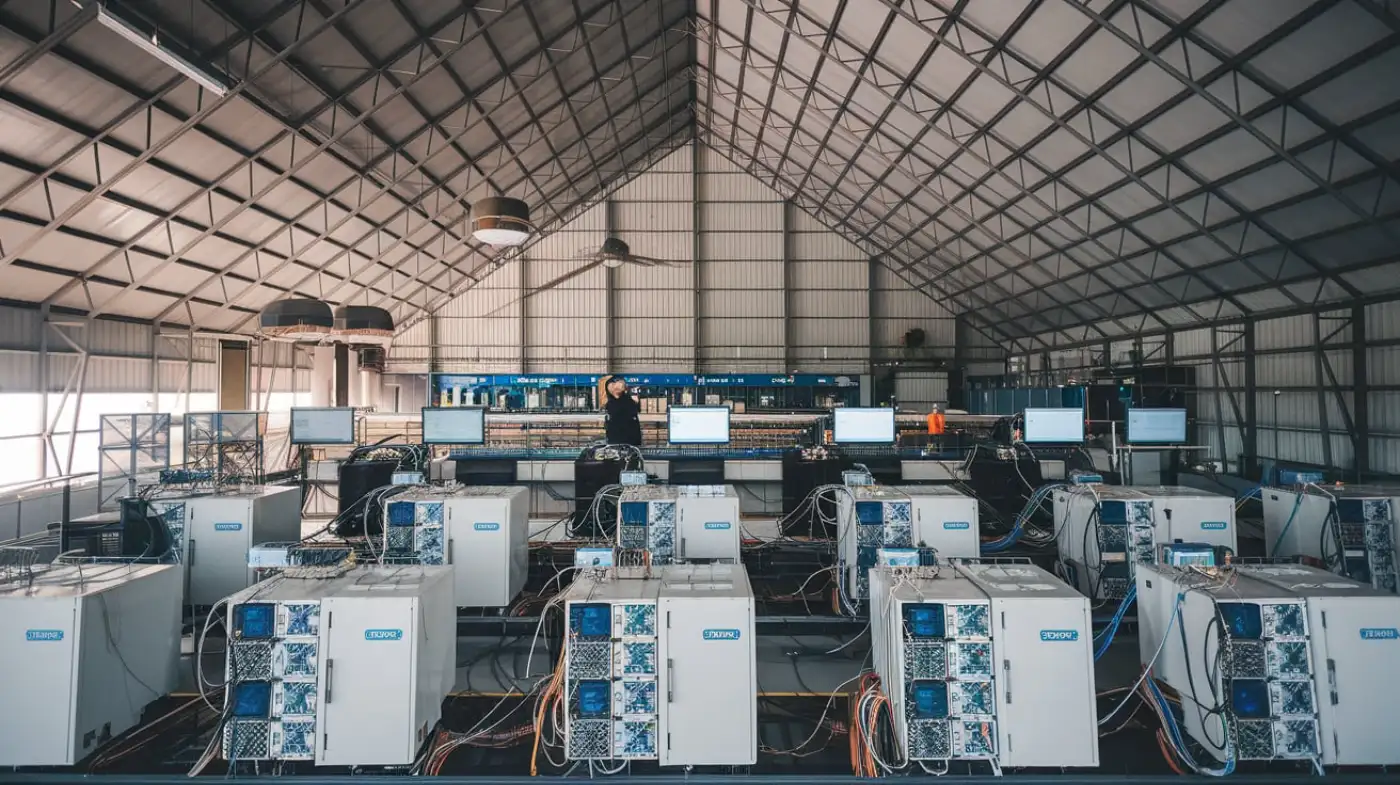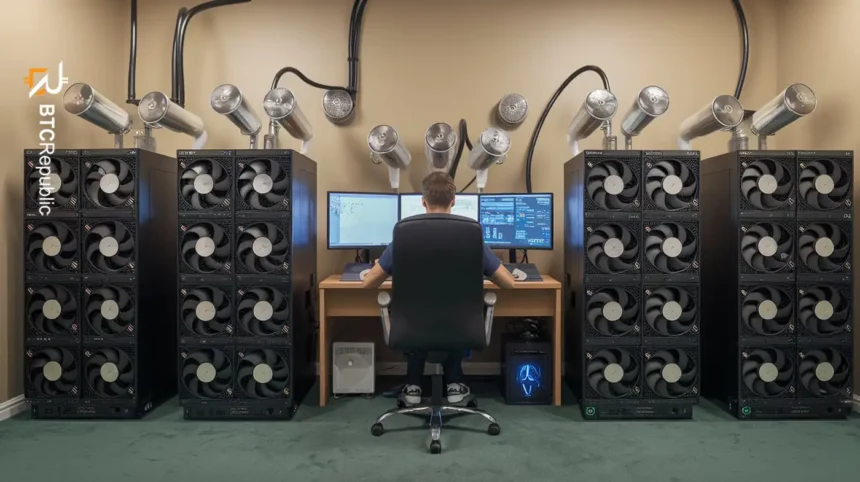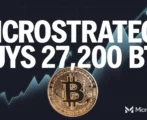Since Ethereum was launched by Vitalik Buterin and co in 2015, it has grown to become one of the most influential and widely used blockchain platforms. enabling decentralized finance (DeFi), smart contracts, non-fungible tokens (NFTs), and much more.
Mining was an integral feature of the ETH network at inception. However, with nearly ten years down the road, the network has experienced some notable changes.
This guide takes a look at the possibility of mining Ethereum in 2024 against the backdrop of the various changes in the network over the years.
Can You Mine Ethereum In 2024?
In 2024, it is no longer possible to mine ETH. Why? Two years ago, the Ethereum network transitioned from the Proof of Work (PoW) consensus mechanism to a Proof of Stake (PoS) model. The transition process was known as “The Merge.”
The move to PoS was kickstarted by Ethereum Improvement Proposal (EIP) 3675 of 2021. After the proposal. It was decided that the Ethereum network would operate both the new PoS and the old PoW under two separate chains until September 15, 2022, when both chains would be merged.
With the shift to PoS, mining ETH is no longer necessary. The change brought about a new scenario where the network is now secured by validators who stake ETH to secure it.
The strategic shift from PoW to PoS is meant to address some nagging challenges in the Ethereum ecosystem, especially scalability and high energy consumption. PoW is a resource-intensive mechanism that requires huge computational power to validate transactions.
This attribute made it less efficient and environmentally unfriendly. PoS is characterized by more energy efficiency and the ability to undertake more transactions per second.
ETH And ETH Classic
In 2016, a Decentralized Autonomous Organization (DAO) venture capital fund was launched on the Ethereum network.
It attracted over 150 million Ether in a crowd sale, making it one of the most successful crowdfunding projects ever. But later on, the DAO’s code was breached, and around 60 million dollars worth of ETH stolen from the fund.
The hack hurt investor confidence and made the Ethereum community decide to introduce a hard fork to reverse it. That decision split Ethereum into two distinct blockchains: Ethereum (ETH) and Ethereum Classic (ETC).
Ethereum Mining Before PoS

Before PoS, mining ETH was a computational process that involved the validation and recording of transactions on the Ethereum network.
The miners were in competition with one another to solve complex mathematical problems necessary for maintaining the integrity of the Ethereum network.
Miners generated an encrypted string of numbers known as cryptographic hashes. Mining utilizes key inputs to create a hash. For each specific algorithm, a particular input will always yield the same hash output. Ethash is the algorithm for Ethereum mining while Keccak-256 is that for Ethereum transactions.
A solution is found when a miner finds a hash that is a match for the block data and possesses the needed level of difficulty. The successful miner is said to have created a new block and subsequently rewarded with an ETH payment.
The new block links to the parent block through a hash, creating a chain. Any data alteration in a block would create new hash values and eventually break the chain.
How Profitable Was Mining Ethereum?
Mining Ethereum before PoS was a profitable venture. However, one drawback with it was its energy-intensive nature. To mine Ethereum profitably in those days required a significant investment in electricity and hardware, as is presently the case with mining other cryptos today.
A number of factors are considered when calculating the likely profitability of mining a crypto asset. Among them include the current price of the asset, mining difficulty and cost of electricity in the location where the mining is taking place.
Ethereum Mining Hardware And Software

The earliest crypto miners had the possibility of generating hashes with CPU machines. But with time, this became difficult due to increasing hash rates and network difficulty.
Consequently, miners had to resort to hardware products with higher power such as GPU mining.
As the competition to generate hashes faster continued, more powerful and specialized hardware emerged in the form of application-specific integrated circuits (ASICs) and (Field Programmable Gate Arrays) FPGAs. Notably, Ethash, Ethereum’s mining algorithm is ASIC-resistant, unlike the SHA-256 algorithm used by Bitcoin.
This resistance still made GPUs relevant for ETH mining. It is also the case with Ethereum Classic which is still based on PoW and hence is still compatible with both GPUs and ASICs.
The most suitable software for Ethereum mining is dependent on the kind of hardware and operating system in the mining rig.
Ethereum Mining Pools Before PoS
Although solo mining was possible for Ethereum, joining a pool of miners was more efficient and profitable. It can take longer to mine a new block when mining solo, no thanks to the greater possibility of a high network difficulty. The more the network hash rate increased, the greater the impracticability of solo mining.
pool mining works by combining the hash rates of all participating members mining for a new block. This increases the likelihood of solving a block more quickly and hence, being rewarded more frequently.
Each time a new block is generated, the reward is shared by all miners. The sharing formula is usually based on the number of hash rates contributed by each miner. In other words, the higher your hash rates, the more reward you are likely to get. A small fee also goes to the pool.
How Does Ethereum Work After Shifting To PoS?
Under the PoS consensus mechanism, transactions in the Ethereum network are validated without intensive energy consumption. Staking has now replaced mining.
Definitionally, staking is the process of taking part in validating transactions on a PoS blockchain network via the locking up of some cryptocurrency. The validators are subsequently rewarded for contributing to the maintenance of the network’s integrity.
Validators to assemble a new block emerge through random selection. Each validator is required to stake a collateral of not less than 32 ETH. Those who succeed in creating a new block are rewarded.
Validators who violate stipulated rules can be subjected to slashing, which means being penalized by risking confiscation of their staked ETH.
Because 32 ETH is a lot of money (in US dollars), many ETH holders who hold smaller amounts of the coin cannot aspire to become validators.
To circumvent this, however, some ETH staking platforms allow staking with lesser amounts of ETH on the condition that they take some percentage of the staking reward.
How To Mine ETC

After the shift to PoS in 2022 many Ethereum miners switched to mining ETC. Many consider Ethereum Classic as the original Ethereum chain from the aftermath of the 2016 DAO hack. But ETH has a much higher market capitalization than ETC.
Since ETC still uses the PoW consensus mechanism, the process involved in mining it is similar to that used by the network before it integrated the PoS mechanism. Also, its mining algorithm, the Ethash, was the network’s mining algorithm prior to transitioning to PoS.
Ethash is memory-hard, meaning that huge amounts of memory are required to mine it. Because of Its ASIC-resistance, it can be mined with consumer-grade hardware such as GPUs.
The following are the steps to mine ETC:
Choose Your Mining Hardware And Software
Though it is possible to mine ETC with ASIC miners, GPUs are the most common hardware used to mine the coin, especially for mining operations that are not large-scale.
Mining GPUs often have NVIDIA or AMD processors running on either Windows or Linux OS or both. Examples include the NVIDIA RTX 30-series and the AMD RX 6000-series.
Once you’ve chosen your desired hardware, proceed to download and install mining-compatible software. Ethminer, Phoenix Miner, NVIDIA, IoIMiner and GMiner are some software examples. Setting up these is usually not difficult.
The setup process includes configuration files that provide mining pool, wallet address, and other information.
Join A Mining Pool
For ETC and other cryptos, mining pools are significantly more advantageous than mining solo.
Here are some popular ETC pools to consider:
- Ethermine
- 2Miners
- Nanopool
- F2Pool
Set Up A Wallet
You need a wallet to store the rewards you’ll receive from your mining efforts. Some options include the Official Ethereum Classic Wallet, Exodus Wallet and MetaMask Wallet.
After your wallet is set up, enter your ETC wallet address into your mining pool settings or mining software in order to receive your payouts.
Start Mining
When every component is ready, it is time to start mining ETC. Launch your mining app and connect to the mining pool to start solving PoW problems and submitting solutions to the EtC network.
Things To Know About The ETC Mining Process

As noted earlier ETC still uses the PoW mechanism, unlike Eth which is now based on PoS. here are a few more aspects of the ETC mining process:
- Block propagation: As soon as a valid block is mined, it is broadcast on the ETC network and a node verification process ensues. If the block is successfully verified, it becomes the newest block in the chain.
- Block reward: As of 2024, ETC miners get a reward of 3.2 ETC for each new block mined. This reward can vary according to network conditions or if updates are carried out on the ETC protocol.
- Difficulty adjustment: Like in ETH, the difficulty level of mining on ETC Classic is adjusted based on the total network hash rate. When more miners join the network, the difficulty is increased to ensure that mining proceeds at a relatively steady rate, typically around every 13 to 15 seconds.
Conclusion
Since it emerged in 2015, the Ethereum network has experienced some notable changes in its original format. For example, in 2022, the network split into ETH and ETC.
Six years later, it transitioned from a PoW consensus mechanism to PoS.
While ETC retained the original PoW mechanism, ETH now uses PoS. This implies that in 2024, ETC still undertakes mining activity while ETH does not.
FAQs
-
Is it possible to mine ETH in 2024?
No, it is not possible to mine Ethereum (ETH) in 2024. After The Merge in September 2022, Ethereum transitioned from Proof of Work (PoW) to Proof of Stake (PoS), eliminating mining entirely. In the PoS system, validators replace miners to secure the network and validate transactions by staking Ethereum (ETH) rather than using computational power to solve complex puzzles. This shift drastically reduces Ethereum’s energy consumption and makes mining obsolete on the network. However, Ethereum Classic (ETC), the original Ethereum chain, is still mineable using Proof of Work.
-
What is the key difference between Ethereum (ETH) and Ethereum Classic (ETC)?
After the DAO episode in 2016, Ethereum has since transitioned to Proof of Stake (PoS), eliminating mining, while Ethereum Classic continues to use Proof of Work (PoW). As a result, Ethereum has a larger ecosystem and broader adoption, especially in DeFiand NFTs, while Ethereum Classic maintains a smaller, more niche community focused on preserving the original Ethereum vision.
-
Are ETH and ETC on the same blockchain?
No, Ethereum (ETH) and Ethereum Classic (ETC) are not on the same blockchain. While they share a common origin, they split into separate blockchains in 2016 after the DAO hack. Ethereum (ETH) was created after a hard fork to reverse the hack and restore the stolen funds, while Ethereum Classic (ETC) continued on the original blockchain, maintaining the belief that the blockchain should remain immutable. As a result, ETH and ETC are now two distinct networks with different development paths and consensus mechanisms.
-
Why did Ethereum transition to PoS?
Ethereum transitioned to Proof of Stake (PoS) primarily to improve scalability, security, and energy efficiency. PoS eliminates the need for energy-intensive mining, reducing Ethereum’s environmental impact. The shift also allows for faster transaction processing and a more decentralized network, as PoS encourages broader participation through staking. Additionally, the move to PoS lays the foundation for future upgrades like sharding, which will further enhance Ethereum’s scalability. Ultimately, PoS helps Ethereum fulfil its vision of becoming a more sustainable and efficient blockchain for decentralized applications.
-
Is It Profitable To Mine Ethereum Classic In 2024?
Mining Ethereum Classic (ETC) can still be profitable in 2024, but whether it is actually profitable for you depends on several factors, such as your mining hardware, electricity costs, network difficulty, and the current price of Ethereum Classic.










